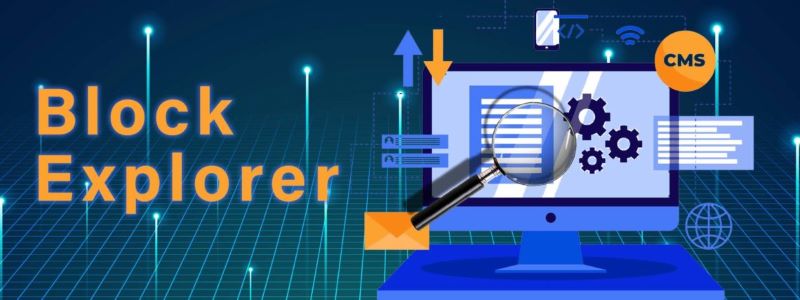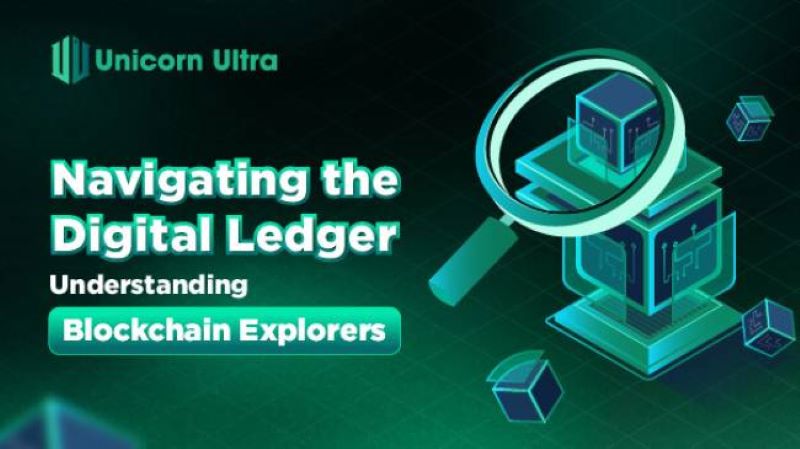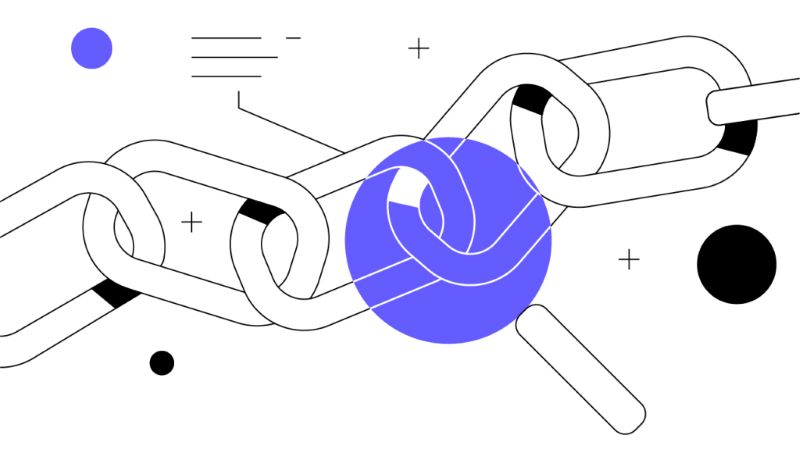Diving headfirst into the crypto world? Grasping the concept of What is a Blockchain Explorer is key to mastering it. These digital magnifying glasses offer a clear window into the usually opaque realm of blockchain transactions. In this ultimate guide, prepare to unveil the mystery behind these explorers. Get ready to decode every block, transaction, and address. Stick around, and let’s crack the code of crypto clarity together.
What is a Blockchain Explorer?
The Evolution and Functionality of Blockchain Explorers
Think of a blockchain explorer as a search engine. It’s where you can learn all about the blocks, transactions, and addresses that make up a blockchain. In the past, blockchain explorers were simple. They just showed recent blocks and transactions. Today, they’re like Swiss Army knives for blockchain fans. They give tons of information, from a transaction’s details down to its very coding. They show all the moving parts of digital money systems.
Blockchain explorers let us see coins moving around the world in real-time. Think about how cool it is to watch your money move on these networks. Sites like Blockchain.com are like windows into the world of cryptocurrency. People can look up any transaction from any time. They use these tools to make sure their transactions are safe and sound. So, these explorers are big for trust and keeping things clear in the digital money world.
Key Features in Modern Blockchain Explorers
Modern blockchain explorers pack a lot of tools. First off, you have the transaction hash lookup. It’s like a tracking number for your package, but for your bitcoin. You enter this code, and boom, you find your transaction. You can also check how much money is in a blockchain address. It’s like checking your bank balance, but for crypto.
These tools can help you see how busy the traffic is. This means you can guess how long it will take for your transaction to finish. You can get really smart with these tools. For example, you might find a bitcoin network explorer for bitcoin stuff. Similarly, an ethereum block viewer helps you with all things ethereum.
You’ll even find explorers for less known coins, which we call altcoins. This is great when you want to learn about more than just bitcoin or ethereum. And if you are curious, you can peek at the richest blockchain addresses. It’s like knowing the wealthiest people in a room but for crypto.
Block explorers are super helpful. They make sure everyone can see what’s happening on blockchains. This means everything stays honest and open. And trust me, in the crypto world, being able to trust the system means a lot.
So, let’s not forget the techy bits. Ever heard of a Merkle tree in blockchain? It’s a way to bundle lots of transactions into a single, neat package. Block explorers can show you these trees. They even let you look at smart contracts. These are like digital deals that run all by themselves.
To sum it up, blockchain explorers are our crystal balls into the blockchain. They show us the now, the past, and even give hints about the future. They are like detectives’ tools, finding out the where, when, and how of every single coin on the move.
Tracing Cryptocurrency Transactions
Understanding the Importance of Transaction Hashes
A transaction hash is like a receipt. It’s a unique number that proves a transaction happened. When you send or buy crypto, you get a transaction hash. This hash helps everyone know that your transaction is real. It’s very important for keeping track of money in the digital world.
A blockchain explorer helps you see these hashes. It lets you look up past transactions too. To use a blockchain explorer, think of it like a search engine, but for crypto money. You can see where money comes from and where it goes. It keeps everything honest and clear for everyone to see.
How to Verify Transactions with Blockchain Explorers
Do you want to check if your crypto money got to the right place? Use a blockchain explorer. First, find your transaction hash. It’s a long mix of letters and numbers you get when you make a transaction. Next, go to a blockchain explorer site. Enter your hash into the search bar. Press enter, and you’ll see all about your transaction. You can see if it’s still waiting or if it’s finished.
Block explorers can show much more. They can tell you the value of transactions. They can show if the fees were high or low. They can even tell you how full a block is. Remember, a block is like a digital box where all the transactions are kept. Explorers let you see blocks that are full and right now being made. These are the latest mined blocks. Or you can see blocks that aren’t connected to the main chain. These are called orphaned blocks.
With a block explorer, you can see all sorts of things. It shows the height of blocks, that’s like the block’s age. It gives you info on smart contracts. Those are like digital promises that run by themselves. It gives you the balance of any address, so you know how much crypto someone has. It can look into a pool of unconfirmed transactions. These are all the transactions waiting to join a block.
Every blockchain is a bit different. Some are for Bitcoin, some for Ethereum, and some for other kinds of crypto. That’s why there are different explorers. But they all do the same basic thing. They let you search by an address or a transaction hash. They help you see what’s happening with your crypto money.
Explorers also help you understand blockchain transactions better. They can show you the whole history of an address. You can see all the money that went in or out. If you’re smart, you can spot patterns. You might see when an address is super busy or really quiet. This could help you guess what will happen next.
Remember, being able to follow money like this is a big deal. It means even though crypto doesn’t have banks, we can still trust it. We can see everything that happens, thanks to blockchain explorers. So next time you make a crypto transaction, check it out on an explorer. It’s a powerful way to see your money move in the crypto world.
Deep Dive into Blockchain Analysis Tools
Identifying Patterns with Address Activity and Transaction Fees
When you hear about blockchain, think of it as a ledger. But not just any ledger. It’s one that is tough to fool with all its details public. This is where blockchain explorers shine. They let you look into blockchain’s heart, showing you what’s happening live. It’s like having a magic window into the world of digital coins. With a simple click, you look up any coin’s journey: from where it began to its last stop. Now, isn’t that something?
Blockchain analysis tools do more than just show transactions. They help see patterns. Like, they show how often an address sends or gets coins. Say you’ve got an address in mind. You check it out and _bam_—you see every deal it’s ever made. It’s not just the deals that matter, though. It’s also the fees they paid for each. High fees can hint at folks in a rush to confirm their transactions. Low ones might show just the opposite.
Utilizing Smart Contract and Token Transfer Explorers
Let’s talk smart contracts. They are like regular contracts but no people are needed. Just code. Smart contracts run the show for things like apps on Ethereum. And guess what? There are special explorers just for them! These explorers let you dig deep into how these smart contracts work. They show you the code and all the times the contract traded tokens with others.
For token transfers, think of tokens as arcade tokens, but for the blockchain. You use them in games and apps, but the plays are all digital. Want to see where these tokens go? Token transfer explorers have your back. They let you trace every token’s trip as it bounces from wallet to wallet.
Blockchain explorers are cool because they make the invisible, visible. They put power in your hands. You see, blockchain is huge. It’s everywhere, yet hidden. But with these tools, it feels right there, touchable. You become a detective in the worlds of Bitcoin, Ethereum, and even the less known coins. You see it all: the big money movers, the quick traders, and even the ones just sitting tight with their digital stash.
Learning how block explorers work is easy. They’re your pals, guiding you through the maze of blockchain. They speak in codes, sure, but once you get them, it’s crystal clear. You just need to know where to look. And whether you’re checking a transaction hash, staring at the block height, or scoping out the latest mined block, it’s all there—every piece of the blockchain puzzle, waiting for you to fit it together.
So next time you’re thinking about how much coin someone has, or if that deal went through, remember the blockchain explorer. It’s your trusty sidekick in this wild world of crypto, ready to answer your call.
Remember, these tools are powerful and show the true spirit of blockchain. Open, transparent, and for everyone to see. No secrets. No hidden moves. Just the raw, undressed truth of the digital coin game.
Advanced Uses of Blockchain Explorers
Investigating Block Height and Unconfirmed Transactions
Ever wonder how a blockchain keeps all its blocks in order? It’s all about the block height. This is the number of blocks in the chain before the current one. It helps users know where a specific block sits in the blockchain.
Blockchain explorers let us look up the latest blocks mined in real-time. It’s like having a superpower to watch the blockchain grow. When you hear about an unconfirmed transaction pool, that’s where all new transactions hang out. They’re waiting to join the blockchain party. This pool is your go-to spot to check if your transaction is still waiting or if it’s already part of a block.
Decoding the Complexities of Merkle Trees and Raw Transactions
Let’s get into the nitty-gritty of blockchain – the Merkle tree. This tech wonder makes sure all transactions in a block are legit. It’s kind of a tree, but instead of leaves, it has lots of tiny data pieces. These join up to show a single code that keeps the block secure.
Now, raw transactions might sound rough, but they’re just the unpolished details of a transaction. This is the blockchain’s raw language, telling us who sent what, to whom, and how much. With blockchain explorers, we can see these raw details clearly. We turn this complex code into something we can actually read and understand.
So, why should we care? Well, having a blockchain analysis tool, like an ethereum block viewer or a bitcoin network explorer, is like giving you X-ray vision into the blockchain. You can check on every transaction and make sure everything is running smooth. Curious folks and pros alike use this to make sure their crypto moves are safe and sound.
These tools don’t just help us look at blocks; they check how much crypto is in an address too. Thanks to address balance checkers, you can peek at an address and see if it’s loaded or just starting out.
And what about those times when things go wrong? With blockchain explorers, we can even find “orphaned blocks”. These are the blocks that didn’t quite make it into the main chain. It can happen when two miners make a block at the same time. The network picks one, and the other becomes an orphan.
In the end, understanding blockchain transactions means keeping an eye on everything from block height to the tiny details in a raw transaction. It’s a whole world of data for us to dive into. With blockchain explorers by our side, we’re becoming experts at this super cool digital ledger, one click at a time.
In this post, we’ve looked at blockchain explorers. They’ve grown a lot, showing more than just transaction data. Now, they reveal deep insights about transfers and contracts. We saw how they are key to tracking crypto and verifying deals using transaction hashes. We then dived deep, learning how to spot patterns and check on smart contracts. Lastly, we explored advanced features like block height and raw transaction data. My final thought: blockchain explorers are vital. They make sense of complex crypto operations for everyone. Keep learning and use these tools to stay smart and secure in the world of cryptocurrency.
Q&A :
What is the purpose of a Blockchain Explorer?
A Blockchain Explorer is a sophisticated online tool that allows users to browse and search the data on a blockchain. It provides a user-friendly interface to view information such as transaction histories, wallet addresses, block activity, and network hashrate, among other data. It is indispensable for users who wish to verify transactions or analyze the blockchain for various purposes.
How can someone use a Blockchain Explorer effectively?
Effective use of a Blockchain Explorer involves entering specific data such as a transaction ID, a wallet address, or a block number into the search bar to retrieve detailed information about it. Users can monitor their transactions, check the number of confirmations, and even explore how blocks are being added to the blockchain in real-time. Blockchain Explorers often provide additional features like viewing the richest wallets or tracking the flow of cryptocurrency to and from certain addresses.
Are there Blockchain Explorers for all cryptocurrencies?
While not every cryptocurrency has a dedicated blockchain explorer, the major cryptocurrencies such as Bitcoin, Ethereum, and Litecoin have multiple explorers available due to their widespread usage and interest. Some blockchain explorers are designed to support multiple currencies, allowing users to track transactions across different blockchains from a single platform.
What information can you not find on a Blockchain Explorer?
A Blockchain Explorer provides vast amounts of data but does not display sensitive personal information about the individuals carrying out transactions. You cannot see the identities of wallet owners as the data is pseudonymous. This ensures a certain level of privacy while maintaining the transparency of the blockchain.
Is using a Blockchain Explorer free?
Most Blockchain Explorers are free to use and accessible to anyone with an internet connection. They are funded through various means such as advertisements, premium services, or donation systems that allow them to offer the core features at no cost to the user. Advanced features or API access might require payment on some platforms.



